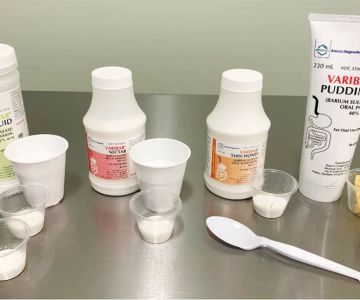Understanding Potassium and Its Importance After Oral Replacement
Potassium is a vital mineral that plays a critical role in maintaining normal muscle function, nerve signaling, and heart rhythm. When potassium levels drop—known medically as hypokalemia—oral potassium replacement therapy is often prescribed to restore balance. However, monitoring potassium levels after oral supplementation is essential to ensure effectiveness and avoid complications such as hyperkalemia (high potassium).
Knowing when to check potassium after oral replacement helps patients and healthcare providers manage treatment safely and optimize recovery.
Why Monitoring Potassium Levels Is Crucial
Oral potassium replacement is commonly used to treat mild to moderate hypokalemia caused by conditions like diuretic use, diarrhea, or poor dietary intake. While oral supplementation is generally safe, potassium levels must be carefully monitored because both low and excessively high potassium levels can cause serious health issues, including irregular heartbeats and muscle weakness.
1. Balancing Effectiveness and Safety
Regular monitoring ensures that potassium levels are rising appropriately without overshooting into dangerous levels. This balance is crucial since potassium levels in the bloodstream can fluctuate based on kidney function, medication interactions, and underlying health problems.
2. Detecting Underlying Conditions
Checking potassium levels after oral replacement can also reveal whether the initial cause of hypokalemia has resolved or if further medical investigation is needed. For example, ongoing losses from gastrointestinal issues or kidney disorders may require adjustments in treatment.
Recommended Timing for Checking Potassium Levels
The timing to test potassium after oral replacement varies depending on the severity of deficiency, the dosage of potassium prescribed, and the patient's overall health.
1. Initial Follow-Up Testing
Typically, potassium levels are checked within 2 to 5 days after starting oral replacement therapy. This window allows time for the body to absorb the potassium and for levels to stabilize. Early testing is critical in patients at risk of cardiac complications or those on high-dose potassium supplements.
2. Ongoing Monitoring
For patients requiring longer-term potassium supplementation, periodic testing every 1 to 2 weeks may be advised. This schedule helps track trends and adjust doses if necessary, especially for those with kidney impairment or concurrent medications like ACE inhibitors or potassium-sparing diuretics.
3. Emergency or Symptom-Driven Testing
If patients experience symptoms suggestive of potassium imbalance—such as muscle cramps, weakness, palpitations, or numbness—immediate potassium testing should be performed regardless of the regular schedule.
Signs and Symptoms Indicating the Need for Potassium Testing
Awareness of symptoms can prompt timely potassium checks and prevent serious complications.
1. Symptoms of Low Potassium (Hypokalemia)
- Muscle weakness or cramps
- Fatigue and dizziness
- Irregular heart rhythms or palpitations
- Constipation or abdominal discomfort
2. Symptoms of High Potassium (Hyperkalemia)
- Muscle fatigue or paralysis
- Heart palpitations or arrhythmias
- Numbness or tingling sensations
>- Chest pain or shortness of breath (in severe cases)
Case Example: Monitoring Potassium After Oral Replacement
James, a 56-year-old patient with hypertension, was prescribed oral potassium after developing mild hypokalemia due to his diuretic medication. His doctor ordered a follow-up blood test four days after starting therapy. The results showed improvement but slightly elevated potassium, prompting a dose adjustment and more frequent monitoring. This case highlights how timely potassium checks after oral replacement ensure safe and effective treatment.
Additional Tips for Safe Potassium Management
Besides testing, patients can take several measures to support potassium balance and oral replacement therapy success.
1. Follow Dietary Recommendations
Incorporate potassium-rich foods such as bananas, oranges, spinach, and potatoes into your diet unless otherwise advised by your healthcare provider.
2. Adhere to Medication Instructions
Take oral potassium supplements exactly as prescribed, avoiding excessive doses that increase risk.
3. Inform Your Healthcare Provider of Any Symptoms
Report unusual symptoms promptly for early evaluation and testing.
Where to Access Reliable Testing and Support
Patients in the United States looking for trustworthy potassium monitoring services can rely on professional healthcare providers and clinics offering blood testing. Dentistry Toothtruth also provides expert guidance and service recommendations for comprehensive health management, including electrolyte monitoring and oral health care.







 Creston Dental & Braces4.0 (304 review)
Creston Dental & Braces4.0 (304 review) Community Health Care Hilltop Family Dental Clinic3.0 (188 review)
Community Health Care Hilltop Family Dental Clinic3.0 (188 review) Tiny Tooth Co. and Trindade Orthodontics4.0 (107 review)
Tiny Tooth Co. and Trindade Orthodontics4.0 (107 review) Plainview Dental4.0 (445 review)
Plainview Dental4.0 (445 review) Mortenson Family Dental4.0 (451 review)
Mortenson Family Dental4.0 (451 review) UofL Dental Associates - Dental Faculty Practice2.0 (36 review)
UofL Dental Associates - Dental Faculty Practice2.0 (36 review) The Importance of Oral Health Education During Pregnancy for a Healthy Pregnancy
The Importance of Oral Health Education During Pregnancy for a Healthy Pregnancy Best Tips for Brushing Your Teeth Properly for Healthy Gums: Essential Techniques for Oral Health
Best Tips for Brushing Your Teeth Properly for Healthy Gums: Essential Techniques for Oral Health Why Skipping Dental Checkups Can Lead to Bigger Oral Health Problems
Why Skipping Dental Checkups Can Lead to Bigger Oral Health Problems Advantages of Porcelain Dental Restorations
Advantages of Porcelain Dental Restorations How Can Diabetes Cause Tooth and Gum Problems? Preventing and Managing Oral Health Issues
How Can Diabetes Cause Tooth and Gum Problems? Preventing and Managing Oral Health Issues Healthy Habits for Promoting Good Oral Health and Hygiene: Tips for a Healthy Smile
Healthy Habits for Promoting Good Oral Health and Hygiene: Tips for a Healthy Smile